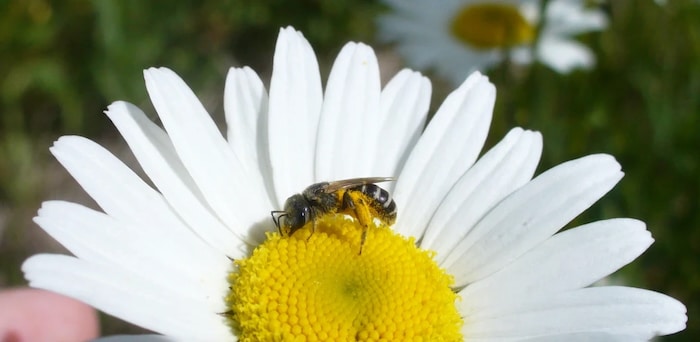
Scientists have studied the nutritional profiles of 57 varieties of pollen and discovered that, in order to have a balanced diet of essential amino and fatty acids, bees must forage from a wide array of plants.
Urban expansion, farming and climate change have altered the habitats of these crucial pollinators.
“Despite public interest and a rise in pollinator plantings, little is known about which plant species are best suited for bee health,” said Dr. Sandra Rehan, senior author of the study and a biology professor at York University in Toronto, in a press release from Frontiers. “This study aimed to better understand the nutritional value of plant species. Based on their ideal protein to lipid ratios for wild bee nutrition, we recommend that pollen species from roses, clovers, red raspberry, and tall buttercup should be emphasized in wildflower restoration projects.”
The study, “Dietary foundations for pollinators: nutritional profiling of plants for bee health,” was published in the journal Frontiers in Sustainable Food Systems.
The world’s agricultural systems are dependent on bees as essential pollinators. At the same time, bees and plants are interdependent — bees need pollen from plants for sustenance and many plants reproduce by bees spreading their pollen.
Nectar provides bees with carbohydrates, while pollen gives them critical nutrients like proteins and lipids. Human-caused environmental changes that alter pollen’s natural properties and availability risk causing malnourishment in bees.
Bees need high-quality foods that contain fatty acids like omega-3 and omega-6 that are non-esterified. Without them, bees don’t live as long, are less able to deal with environmental stressors and have weaker immune systems. Consuming nutrients in the wrong ratio can lead to cognitive issues. Amino acids are necessary for reproduction and cognitive health in bees, but eating too many of them can make them more susceptible to some parasites.
In determining which plants were healthiest for bees, the researchers collected pollen from 57 North American plant species — both from lab-dried flowers and those fresh in the wild. Plant species were chosen based on their prevalence and how important they were to wild northeastern bee species.

A sweat bee (Halictus ligatus) feeds from a daisy. Dr. Sandra Rehan
The scientists processed and analyzed the pollen for levels of various non-esterified fatty acids, amino acids and ratios of lipids and omega-6:3 to protein. They also looked at whether closely related plant species provided similar nutritional benefits, as well as if non-native species were less nutritious than native plants.
They discovered that different plants of the same family gave bees very different nutrients, except when it came to essential amino acids. Plants from the legume family, daisy family and cabbage family all contained similar essential amino acid levels compared with other members. Daisies — an important foraging plant for bees — were found to provide an especially high amount of essential amino acids.
The research team found that plants with high levels of essential amino acids had relatively low levels in non-esterified fatty acids, while the reverse was also true.
“There is a potential tradeoff between fatty acid and amino acid content within pollen, suggesting that a diverse floral diet may benefit bees more than a single pollen source,” Rehan said. “No one plant species is optimal for generalist wild bee health.”
The results indicated that foraging for food from a wide variety of flowers is healthiest for most bees, and that endemic plant species offer no nutritional advantage over non-native plants. Most pollen species provide the majority of needed nutrients, but for optimal dietary needs, bees need to visit several different plant species.
The team suggested that the diverse nutritional content reflected the varying requirements of different bee species, particularly the specialists who favor certain plants. A wide range of nutrition sources boasting different properties means all bees can feed on plants that nourish them best.
“We hope this work will help inform flowering plant selections for pollinator gardens,” Rehan said. “But here we examined only 57 plant species, and there are thousands to examine to understand nutritional profiles. We hope this will inspire future similar research as well as follow up studies on the preference and survival of bees on different diets.”
The post Bees Need Pollen From a Variety of Plants to Stay Healthy, Study Finds appeared first on EcoWatch.
